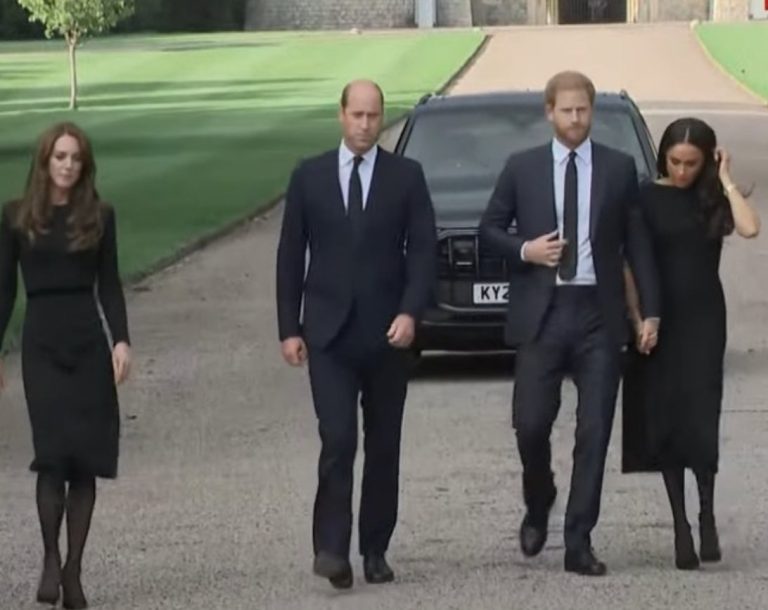Body Language Showing Interest
Ever wondered how we can understand someone’s interest without them even saying a word? It’s all in the body language! Understanding how to read and interpret body language can help us navigate social interactions and strengthen our relationships. In this article, we’ll explore the fascinating world of body language showing interest. So, let’s dive in and discover the subtle cues that reveal someone’s genuine enthusiasm and engagement!
When we’re genuinely interested in something, our bodies can’t help but show it. Whether it’s leaning in closer, maintaining eye contact, or nodding along with enthusiasm, our nonverbal signals broadcast our genuine interest. By paying attention to these subtle cues, we can better understand and connect with the people around us. So, let’s uncover the secrets of body language and gain insights into the art of showing interest!
Wouldn’t it be amazing if we could instantly know if someone is genuinely interested in us or what we have to say? Well, reading someone’s body language can give us valuable insights into their level of interest. From open and relaxed postures to enthusiastic gestures, understanding these nonverbal cues allows us to gauge someone’s interest authentically. So, get ready to decode body language signals that reveal genuine engagement and interest!
When it comes to showing interest through body language, there are a few key cues to keep in mind. Maintain eye contact to show attentiveness, lean in slightly to display curiosity, and nod your head to convey understanding. Additionally, open body posture and facing the person directly demonstrate engagement. Lastly, mirroring their gestures and expressions can indicate interest and connection. Master these body language signals to make a lasting impression.

How Body Language Shows Interest: Unlocking the Secrets of Nonverbal Communication
Body language is a powerful form of nonverbal communication that can reveal a person’s true thoughts and feelings. When it comes to interest, our bodies have a fascinating way of conveying it through various cues and gestures. Understanding and interpreting these signals accurately can improve our communication skills and help us build stronger connections with others. In this article, we will dive deep into the world of body language and explore how it reveals interest in different contexts.
1. The Power of Eye Contact
Eye contact is one of the most powerful indicators of interest in body language. When someone is genuinely interested in a conversation or a person, they maintain steady and prolonged eye contact. Their eyes light up, and they may lean in slightly towards the person they are engaged with. Dilated pupils are another giveaway, as they indicate increased attentiveness and interest. On the contrary, avoiding eye contact, darting eyes, or frequently looking away are signs of disinterest or discomfort.
In romantic contexts, eye contact takes on a different meaning. Prolonged eye contact combined with dilated pupils may indicate attraction and interest. It creates a sense of connection and intimacy between two people. Blinking rate also plays a role; when someone is interested, their blinking may decrease as they focus their attention on the person of interest. However, it’s important to note that cultural norms and personal preferences can influence eye contact behaviors, so it’s crucial to consider individual differences.
2. Engaging and Open Body Posture
Our body posture speaks volumes about our level of interest and engagement. When someone is interested in a conversation or a topic, they lean towards the person they are engaging with. This slight forward lean demonstrates attentiveness and active participation. Open body language, with uncrossed arms and legs, is another positive indicator of interest. It signals receptiveness and willingness to listen.
Conversely, closed body language, such as crossed arms or legs, can indicate disinterest or defensiveness. These defensive postures create a barrier between individuals and suggest a lack of engagement. If you want to show interest, make a conscious effort to adopt an open and relaxed body posture. By doing so, you signal approachability and create a welcoming environment for meaningful communication.
3. Mirroring and Synchronization
When we are genuinely interested in someone, we unconsciously mirror their gestures, expressions, and even their speech patterns. Mirroring is a subtle yet powerful form of nonverbal communication that fosters rapport and connection. It creates a sense of mutual understanding and trust between individuals.
Pay attention to how someone mirrors your movements or expressions during a conversation. If they mimic your gestures or adopt a similar body posture, it is a strong indication of interest and engagement. Synchronization of speech patterns, such as matching the speed or tone of voice, can also occur when there is a genuine interest in the conversation. These nonverbal cues signal a desire to establish a connection and build rapport with the other person.
4. Active Listening and Nodding
Interest can also be demonstrated through active listening behaviors. When someone is genuinely interested in a conversation or a speaker, they actively listen by nodding their head. Nodding is a universal gesture that signifies attentiveness and agreement. It shows that the listener is actively processing the information and is engaged in the conversation.
In addition to nodding, an interested individual may use other verbal and nonverbal cues to show attentiveness, such as leaning forward, maintaining eye contact, and providing encouraging feedback. These cues indicate that they are actively involved in the conversation and genuinely interested in what is being said.
5. Engaging Facial Expressions
Our facial expressions are integral to expressing and interpreting emotions, including interest. When someone is interested, their face lights up with positive and engaged expressions. Smiling is an essential facial expression of interest and warmth. A genuine smile reaches the eyes and creates a welcoming atmosphere.
Interested individuals may also display other positive facial expressions, such as raised eyebrows, widened eyes, and a relaxed forehead. These expressions convey curiosity, enthusiasm, and a desire to connect. On the other hand, a blank or expressionless face can indicate boredom or disinterest. Being mindful of our facial expressions can help us convey genuine interest and foster better connections with others.
6. Proximity and Touch
Proximity is another essential aspect of nonverbal communication that can show interest. When someone is interested in another person, they tend to decrease the physical distance between them. They may lean in closer, reducing the space between them. This closeness signifies intimacy and involvement in the conversation.
Touch can also play a role in demonstrating interest. Light and appropriate touches, such as a gentle hand on the arm or a friendly pat on the back, can convey warmth and connection. However, it’s crucial to respect personal boundaries and cultural norms. In some contexts, touch may not be appropriate or comfortable for everyone. Always be mindful of the other person’s comfort levels and adjust your behavior accordingly.
7. Verbal Cues of Interest
While body language is a powerful indicator of interest, verbal cues are equally significant. When someone is interested, they actively participate in the conversation by asking questions, contributing ideas, and providing feedback. They show enthusiasm and genuine curiosity about the topic at hand.
Verbal cues of interest also include using supportive statements, acknowledging the speaker’s perspective, and showing empathy. Acknowledging and validating the other person’s thoughts and feelings strengthens the bond and demonstrates a deep level of engagement. Remember to be an active listener and actively contribute to the conversation to show your interest and involvement.
The Effects of Body Language on Communication and Relationships
Understanding and using body language effectively can have a profound impact on our communication and relationships. When we are aware of the signals we are sending and can interpret the signals of others correctly, we can enhance the quality of our interactions and establish stronger connections.
How to Improve Your Body Language to Show More Interest
To improve your body language and convey more interest, here are some tips to keep in mind:
1. Cultivate Active Listening Skills
Actively listen to others by maintaining eye contact, nodding, and showing genuine curiosity. Practice being present and fully engaged in conversations to demonstrate interest.
2. Be Mindful of Your Body Posture
Adopt an open and relaxed body posture to communicate attentiveness and approachability. Uncross your arms and legs, and lean towards the person you are engaging with.
3. Practice Mirroring and Synchronization
Become aware of the mirroring tendencies during conversations and allow yourself to naturally synchronize with the other person’s gestures and expressions. This can help establish rapport and enhance connection.
4. Pay Attention to Facial Expressions
Be mindful of your facial expressions and make an effort to convey positivity and engagement through smiling, raised eyebrows, and relaxed facial muscles.
5. Respect Personal Boundaries and Cultural Norms
Be aware of personal space and touch preferences. Respect others’ comfort levels when it comes to physical proximity and touch.
6. Contribute Actively to Conversations
Engage in conversations by asking questions, contributing ideas, and providing feedback. Show genuine curiosity and enthusiasm for the topic at hand.
7. Seek Feedback and Self-Reflection
Ask for feedback from trusted individuals who can provide insights into your body language and level of interest. Engage in self-reflection to identify areas for improvement and growth.
In conclusion, body language plays a crucial role in showing interest and establishing meaningful connections. By becoming aware of our nonverbal cues and enhancing our communication skills, we can create stronger relationships and foster a deeper understanding of others. Remember, effective communication is a dance of both verbal and nonverbal cues, and mastering the art of body language can unlock a world of authentic and fulfilling interactions.
Key Takeaways: Body Language Showing Interest
When someone is interested, they maintain eye contact with you.
Leaning forward towards the person you’re talking to shows interest.
Nodding your head while listening is a positive sign of interest.
Open body posture, with uncrossed arms and legs, indicates interest.
Using appropriate facial expressions, like smiling and showing enthusiasm, demonstrates interest.
Frequently Asked Questions
In this section, we will address commonly asked questions about body language that shows interest.
1. How can I use body language to show interest in a conversation?
To project interest through body language, maintain eye contact, nod your head, and lean slightly towards the speaker. Open and relaxed facial expressions, such as smiling and raised eyebrows, also indicate interest. It’s important to adopt an open posture by facing the person directly, without crossing your arms or legs. By mirroring the other person’s body language, you show that you are engaged and interested in what they are saying.
Nonverbal cues like leaning in, using hand gestures, and maintaining an open and relaxed body position all contribute to displaying genuine interest in a conversation. Remember, actions speak louder than words!
2. What are some body language signs that someone is interested in me?
When someone is interested in you, they will display several nonverbal cues. These indicators include maintaining eye contact, facing you directly, and leaning towards you. They may also mirror your body language, such as adopting similar gestures or postures. Additionally, an interested person will have open and engaged facial expressions, like smiling, raised eyebrows, and attentive listening.
Keep in mind that each person’s body language may differ slightly, so it’s crucial to consider a cluster of signals rather than relying on a single gesture. By paying attention to these cues, you can better gauge someone’s interest in you.
3. How can I show interest in a job interview through body language?
In a job interview, displaying interest through body language is essential. Maintain eye contact with the interviewer, nod your head to show understanding, and lean slightly forward to demonstrate engagement. Keep your facial expressions friendly and attentive. Use open hand gestures to emphasize key points, and avoid crossing your arms or legs, as it can convey a closed-off attitude.
In addition, mirroring the interviewer’s body language, such as adopting their posture or gestures, can establish rapport and show interest. Being mindful of your body language can help create a positive impression during a job interview.
4. How can I improve my body language to show more interest?
To improve your body language and display more interest, start by practicing active listening. This involves maintaining eye contact, nodding, and providing verbal and nonverbal feedback to the speaker. Keep your body open and facing the person, avoid distractions, and minimize fidgeting.
You can also work on developing a genuine and friendly smile, as well as adopting an open and relaxed facial expression. Pay attention to your posture, and make a conscious effort to lean slightly forward when engaging in conversations. By implementing these techniques, you can enhance your body language to demonstrate a greater level of interest.
5. Can body language alone convey interest without verbal communication?
While body language plays a significant role in expressing interest, it’s important to note that a combination of nonverbal cues and verbal communication is most effective. Body language alone can convey a degree of interest, especially through attentive eye contact, relaxed postures, and engaged facial expressions. However, the absence of verbal communication may limit the depth and clarity of the conveyed message.
In many situations, verbal communication is crucial in expressing interest and understanding the context. Nonverbal cues should complement and reinforce verbal conversation to establish effective communication and display genuine interest.
Body Language – Indicators of Interest (IOIs)
Summary
To show interest, use body language like leaning in, maintaining eye contact, and nodding. These simple actions can demonstrate that you’re engaged in the conversation. Avoid crossing your arms or fidgeting, as this can signal disinterest. Remember, body language can communicate just as much as words, so pay attention to how you present yourself.
Building rapport can be achieved through positive body language such as smiling, mirroring movements, and using open gestures. This can help create a comfortable and friendly atmosphere. Remember, being aware of your own body language and being attentive to others can make a big difference in how you connect with people.


